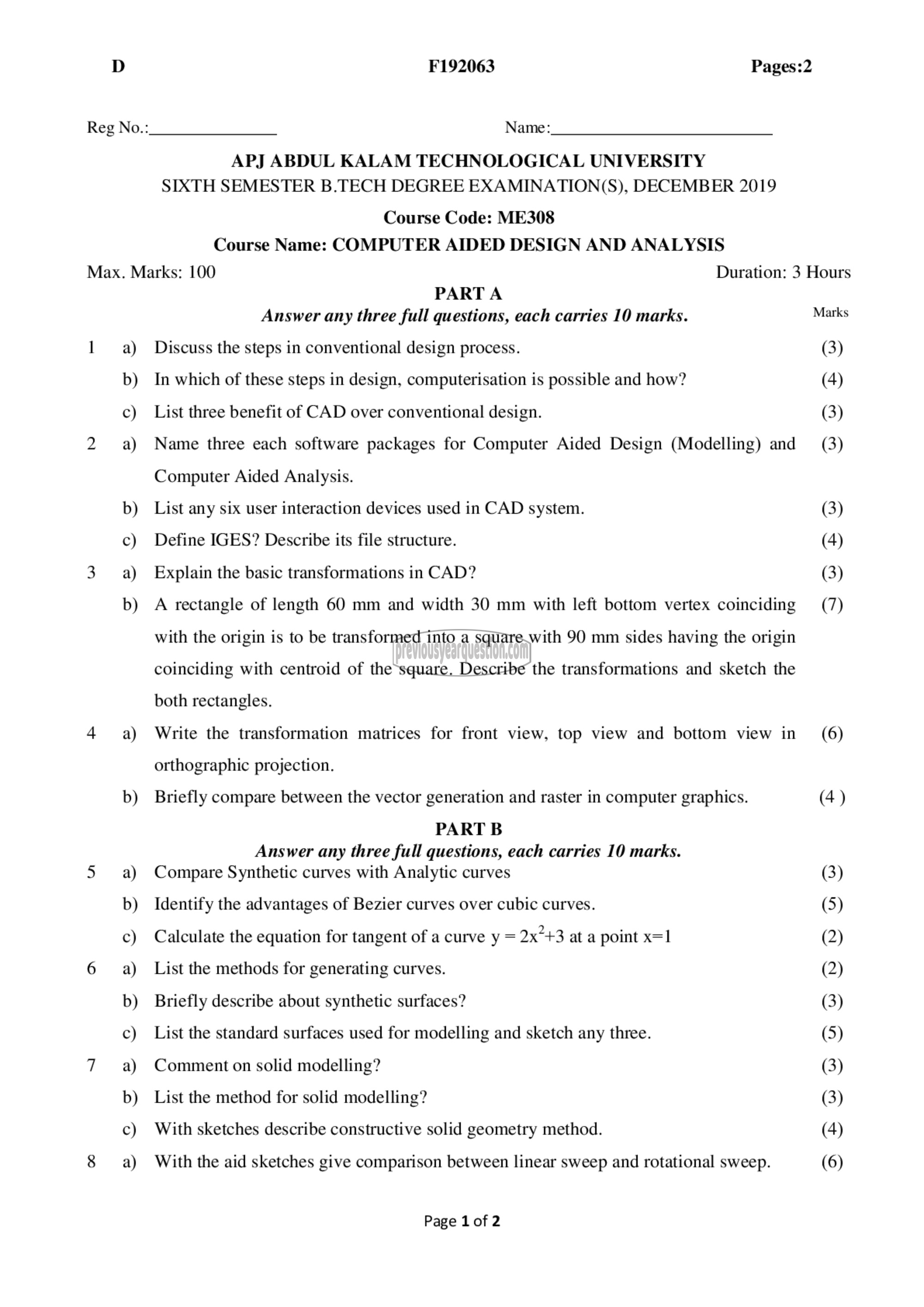APJ ABDUL KALAM TECHNOLOGICAL UNIVERSITY Previous Years Question Paper & Answer
Semester : SEMESTER 6
Subject : Computer Aided Design and Analysis
Year : 2019
Term : DECEMBER
Branch : MECHANICAL ENGINEERING
Scheme : 2015 Full Time
Course Code : ME 308
Page:1
D F192063 Pages:2
Reg No.: Name:
APJ ABDUL KALAM TECHNOLOGICAL UNIVERSITY
SIXTH SEMESTER B.TECH DEGREE EXAMINATION(S), DECEMBER 2019
Course Code: ME308
Course Name: COMPUTER AIDED DESIGN AND ANALYSIS
Max. Marks: 100 Duration: 3 Hours
PARTA
Answer any three full questions, each carries 10 marks. Marks
1 9) _ Discuss the steps in conventional design process. (3)
b) In which of these steps in design, computerisation is possible and how? (4)
c) List three benefit of CAD over conventional design. (3)
2 a) Name three each software packages for Computer Aided Design (Modelling) and (3)
Computer Aided Analysis.
b) List any six user interaction devices used in CAD system. (3)
c) Define IGES? Describe its file structure. (4)
3 ஐ Explain the basic transformations in CAD? (3)
b) A rectangle of length 60 mm and width 30 mm with left bottom vertex coinciding (7)
with the origin is to be transformed into a square with 90 mm sides having the origin
coinciding with centroid of the square. Describe the transformations and sketch the
both rectangles.
4 a) Write the transformation matrices for front view, top view and bottom view in (6)
orthographic projection.
b) Briefly compare between the vector generation and raster in computer graphics. (4)
PART छ
Answer any three full questions, each carries 10 marks.
5 ച Compare Synthetic curves with Analytic curves (3)
b) Identify the advantages of Bezier curves over cubic curves. (5)
c) Calculate the equation for tangent of a curve y 203 at a point x=1 (2)
6 9) List the methods for generating curves. (2)
b) Briefly describe about synthetic surfaces? (3)
c) List the standard surfaces used for modelling and sketch any three. (5)
7 8) Comment on solid modelling? (3)
b) List the method for solid modelling? (3)
c) With sketches describe constructive solid geometry method. (4)
8 a) With the aid sketches give comparison between linear sweep and rotational sweep. (6)
Page 1 of 2
